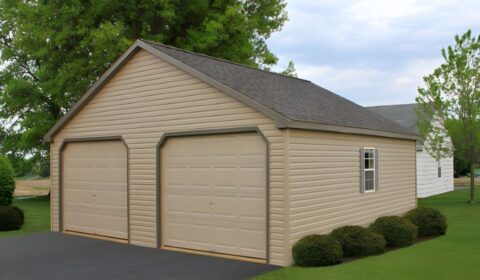How to Fit Vertical Blinds?
To fit vertical blinds, follow these steps:
- Measure the window (inside or outside recess).
- Mark bracket positions using a pencil and spirit level.
- Drill holes and secure the brackets.
- Attach the headrail and ensure it’s level.
- Hang the slats onto the headrail hooks.
- Adjust the slats for smooth movement.
- Finish with weights and chains for stability.
Vertical blinds are a stylish and practical window covering solution. They offer excellent light control, privacy, and a modern aesthetic. With your guidance, fitting vertical blinds can be a straightforward DIY task in your living room, bedroom, or office.
This comprehensive guide will walk you through the entire process of how to fit vertical blinds, from measuring and choosing the right type to installation and maintenance.
Why Choose Vertical Blinds?
Before diving into the installation process, let’s explore why vertical blinds are let’s option for your home or office:
- Versatile – Suitable for large windows, patio doors, and bay windows.
- Light Control – Easily adjust the slats to let in the desired light.
- Privacy – Provides excellent privacy, especially in street-facing rooms.
- Easy to Maintain – Simple to clean and replace individual slats if needed.
- Modern Aesthetic – Available in various colours and materials to match any decor.
Must Read: How to Hang Curtains Without Drilling?
Tools and Materials Needed
Before you start, gather the following tools and materials:
- Measuring tape
- Pencil and spirit level
- Drill and appropriate drill bits
- Rawl plugs and screws
- Screwdriver
- Step ladder (if needed)
- Brackets and fixings (supplied with the blinds)
- Vertical blind track and slats
Step 1: Measuring Your Window
Accurate measurements are crucial for a perfect fit. Decide whether you want the blinds to be installed inside or outside the window recess:
- Inside the Recess: Measure the width and height of the recess at three different points and take the smallest measurement.
- Outside the Recess: Measure the width and height of the area you want to cover, adding extra width (usually 10-15 cm) on each side for better coverage.
Step 2: Choosing the Right Blinds
Vertical blinds come in different materials and styles, including fabric, PVC, and wooden slats. Consider:
- Material: Fabric for soft aesthetics, PVC for durability, or wood for a classic look.
- Slat Width: Standard slat widths range from 89mm to 127mm.
- Control Options: Wand control for a child-safe option or a cord-and-chain mechanism for traditional control.
Step 3: Marking the Bracket Positions
- Hold the headrail in place to determine bracket positions.
- Mark the drilling points with a pencil, ensuring they are level.
- For wider blinds, use additional brackets for extra support.
Use a spirit level to ensure the headrail will be straight.
Step 4: Installing the Brackets
- Drill pilot holes at the marked points.
- Insert raw plugs if fixing into plaster or masonry.
- Secure the brackets using screws.
If fitting into a wooden surface, raw plugs are not necessary.
Step 5: Attaching the Headrail
- Slot the headrail into the brackets.
- Secure it in place by tightening any locking screws or clips.
- Ensure it is firmly attached and aligned properly.
Step 6: Hanging the Vertical Slats
- Attach each slat to the hooks on the headrail.
- Ensure they are evenly spaced and facing the correct direction.
- Test the rotation mechanism to check for smooth operation.
Step 7: Adjusting and Finishing Touches
- Adjust the slats to ensure they rotate and stack evenly.
- If the slats are too long, trim them carefully following manufacturer instructions.
- Attach the bottom weights and connecting chain for stability.
Maintenance Tips for Vertical Blinds
To keep your blinds looking great and functioning smoothly:
- Regular Dusting: Use a microfibre cloth or vacuum with a brush attachment.
- Spot Cleaning: Wipe fabric or PVC slats with a damp cloth and mild detergent.
- Lubricate Mechanisms: If the track becomes stiff, apply a small amount of lubricant.
- Replace Damaged Slats: Most vertical blinds allow for easy slat replacement.
Final Thoughts
Fitting vertical blinds is a simple and rewarding DIY project that enhances the functionality and style of your space. By following these step-by-step instructions, you can install your blinds efficiently and ensure they last for years to come. Whether you’re improving privacy or controlling you’re updating your interior, vertical blinds are an excellent choice.
Read More Blogs At: The Home Designer
Frequently Asked Questions
How long does it take to install vertical blinds?
On average, it takes about 30-60 minutes, depending on window size and experience level.
Can I cut vertical blinds to fit my window?
Yes, many blinds can be trimmed to the correct length and width using a sharp pair of scissors or a hacksaw for the headrail.
Do vertical blinds work for bay windows?
Yes! Vertical blinds are ideal for bay windows; you can install separate tracks for each section.
How do I fix uneven vertical blinds?
Adjust the slats manually or check if the headrail needs realignment. If a slat is damaged, replace it with a new one.





